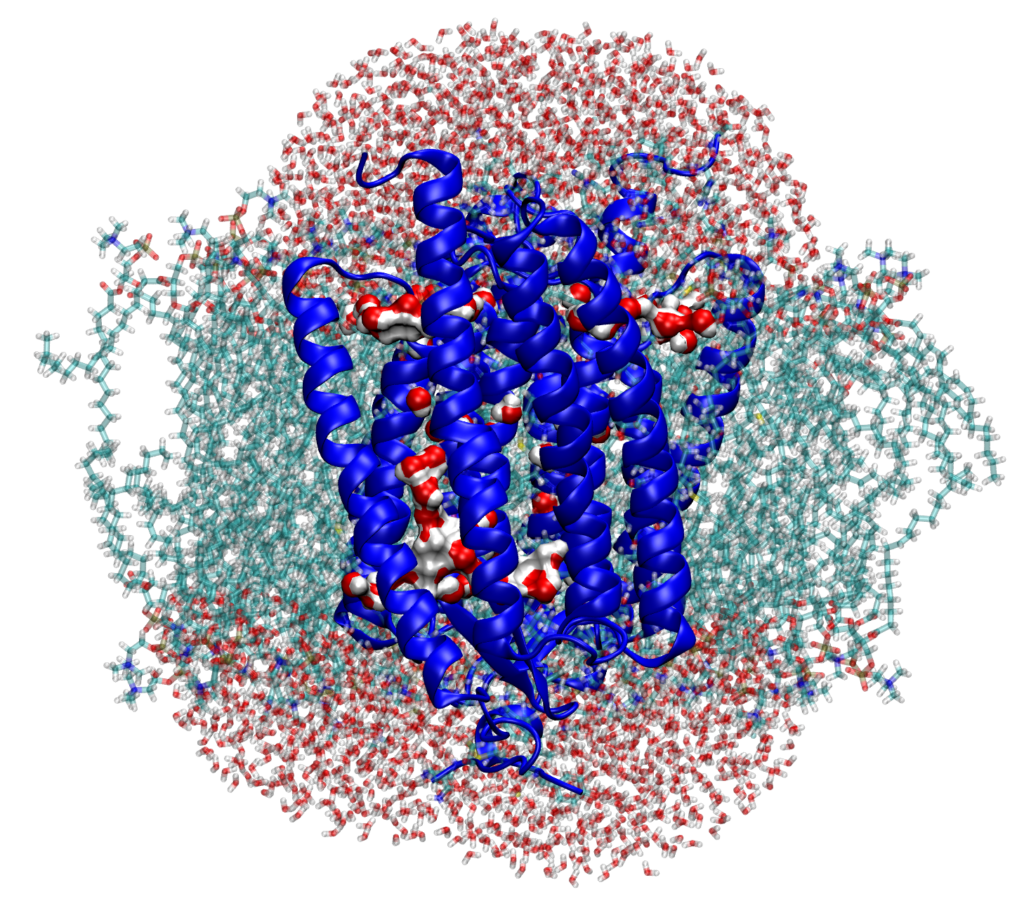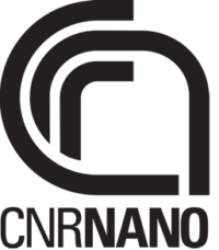V. Tozzini, G. Brancolini, L. Zanetti Polzi, L. Bellucci, R. Nifosì.

The modeling and computational activity of Cnr Nano is focused on the study of biological systems (proteins, DNA, RNA, enzymes, bacteria and viruses) at different resolution levels of scale, from (macro) bio-molecules, to protein complexes, up to cells and tissue models.
Particular attention is paid to the biophysical mechanisms of diseases or aging, to the development of new drugs, fluorescent biosensors and to diagnostic and therapeutic approaches based on nanoscience. These are accompanied by the study of chemisorption of biomolecules and chemical processes at the biomolecule / material interfaces for the study of bio-eco-compatible, bio-mimetic, and granular materials.
The activities indicated use a wide range of computational techniques ranging from ab initio atomistic methods (for the study of optical properties, chemical interactions and processes in solution or surface bio-molecule interfaces), to atomistic molecular dynamics, modeling for homology and docking, low resolution molecular dynamics and development of Coarse Grained force fields. Machine learning algorithms and neural networks are transversally involved and applied to the optimization of models for drug discovery, sequence analysis, and more generally for the study of cell functioning mechanisms at different levels of complexity.
Selected Publications
Activation of PKA via asymmetric allosteric coupling of structurally conserved cyclic nucleotide binding domains,
Y. Hao, J. P. England, L. Bellucci, E. Paci, H. C. Hodges, S. S. Taylor, and R. A. Maillard,
Nat Commun 10, 3984 (2019); doi: 10.1038/s41467-019-11930-2
High affinity protein surface binding through co-engineering of nanoparticles and proteins,
M. Ray, G. Brancolini, D.C. Luther, Z. Jiang, R. Cao-Milán, A.M. Cuadros, A. Burden, V. Clark, S. Rana, R. Mout, R.F. Landis, S. Corni, and V.M. Rotello,
Nanoscale, 14, 2411-2418 (2022); doi: 10.1039/D1NR07497K
Inhibitor binding influences the protonation states of histidines in SARS-CoV-2 main protease,
A. Pavlova, D.L. Lynch, I. Daidone, L. Zanetti-Polzi, M.D. Smith, C. Chipot, D.W. Kneller, A. Kovalevsky, L. Coates, A.A. Golosov, C.J. Dickson, C. Velez-Vega, J.S. Duca, J.V. Vermaas, Y.T. Pang, A. Acharya, J.M. Parks, J.C. Smith, and J.C. Gumbart,
Chem Sci 12, 1513-1527 (2021); doi: 10.1039/d0sc04942e
Molecular insight on the altered membrane trafficking of TrkA kinase dead mutants,
R. Amodeo, R. Nifosì, C. Giacomelli, C. Ravelli, L. La Rosa, A. Callegari, M. L. Trincavelli, S. Mitola, S. Luin, and L. Marchetti,
Biochim Biophys Acta Mol Cell Res 1867, 118614 (2020); doi: 10.1016/j.bbamcr.2019.118614
Effects of Ligand Binding on the Energy Landscape of Acyl-CoA-Binding Protein,
P. Sonar, L. Bellucci, A. Mossa, P.O. Heidarsson, B.B. Kragelund, and C. Cecconi,
Biophys J 119, 1821-1832 (2020); doi: 10.1016/j.bpj.2020.09.016

